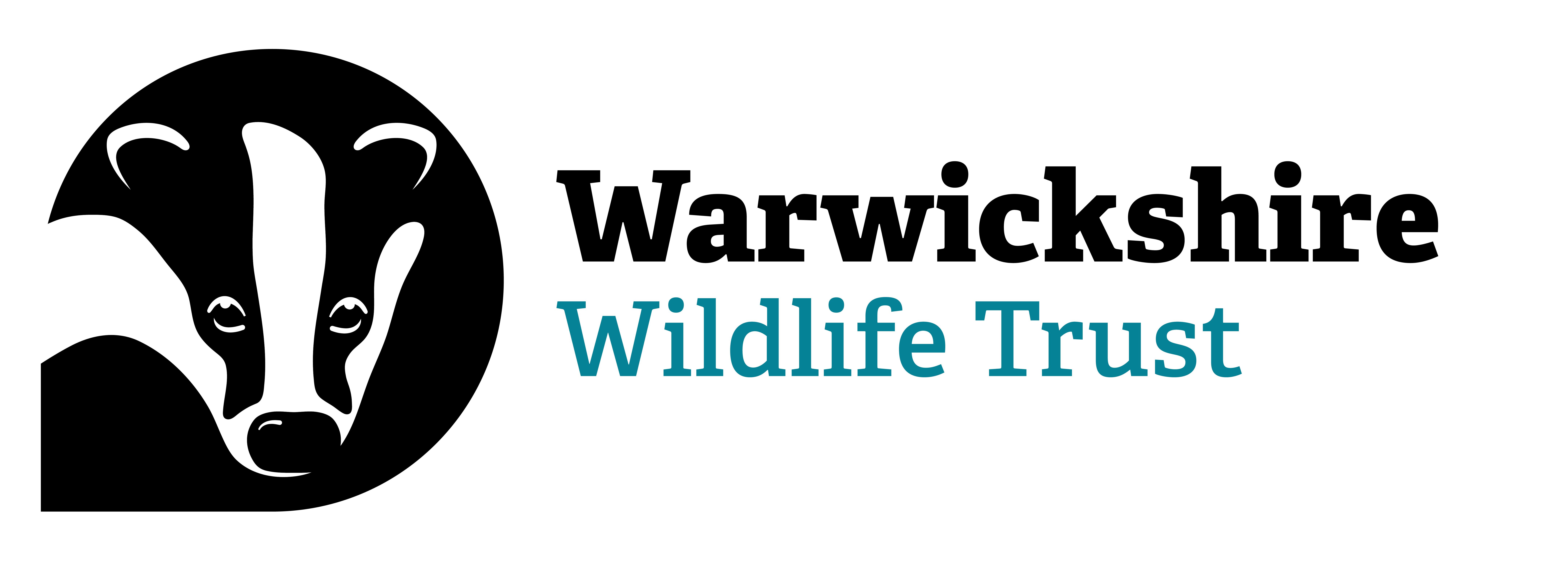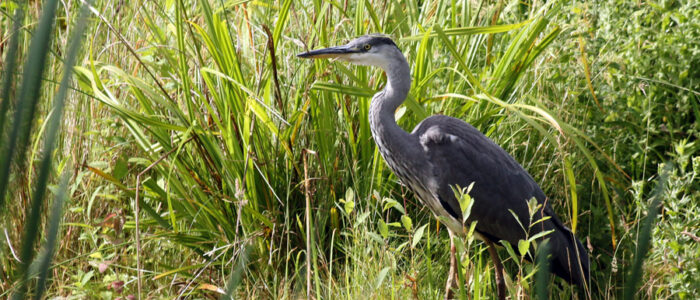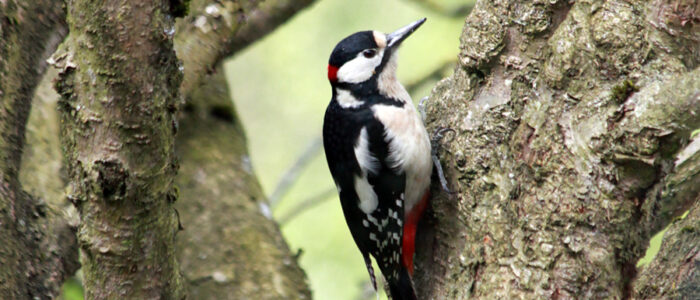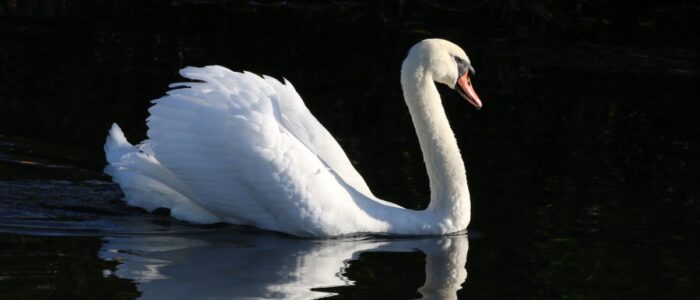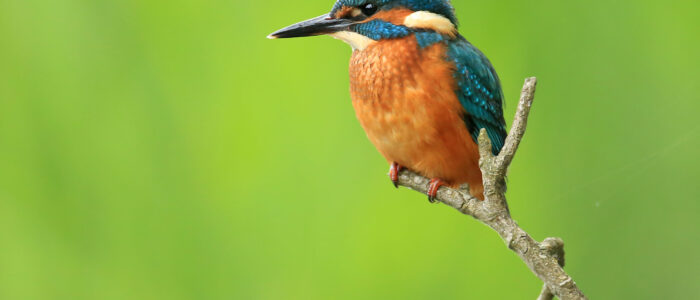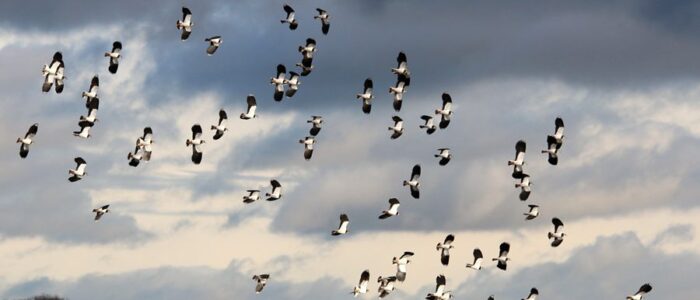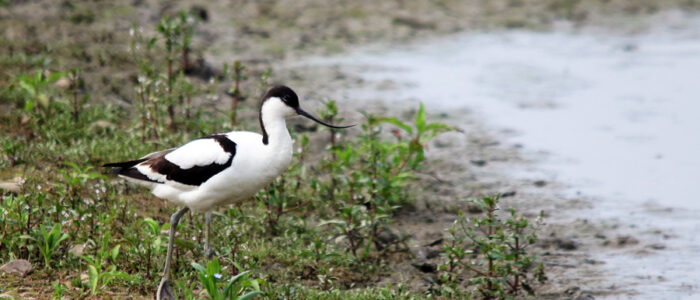Many different birds live, feed and breed on and around our wetlands. Some can be found in other habitats but many are only found here.
A striking electric blue flash signifies the arrival of the kingfisher, often accompanied by its high pitched piping call. A truly magical sight that can be seen on most types of river if the conditions are right. They use bank side perches, such as a tree branch, from which to dive down in to the river on unsuspecting fish below before returning to their perch to eat it, or they may take it back to their nest which lies at the end of a bank side burrow. Other fish-eating birds found on rivers include the cormorant, heron and the migratory goosander that spends the winter here before travelling north again to breed in the spring.
The stately heron hunts its prey by picking a spot near the waters edge where it stands motionless waiting for any unwary fish to pass within striking range of its long beak. Its slow relaxed flight and shear size make it hard to mistake for anything else if seen flying overhead. Fish are not its only food though, as it will take amphibians, invertebrates and small mammals. They nest in colonies (called a ‘heronry’) at the tops of trees.
Along the banks of rivers you may be lucky enough to see the nest holes of sand martens with a flock of these summer migrants performing aerobatics overhead in the pursuit of insects attracted to the water. What is the difference between a sand marten and the commoner house marten you see around towns? They both have a white underbody and a dark back, but the sand marten has a brown chest band and the house marten has a white band across the top of its tail.
